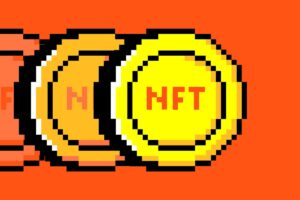Bitcoin Does Not Function as a Payments Platform

Twitter founder Jack Dorsey recently emphasized the importance of scaling payments within the Bitcoin community to maintain relevance. In an interview with Haley Berkoe on the 21 in 21 podcast, he stated, “I think it has to be payments for [Bitcoin] to be relevant on the everyday.”
However, I have a different perspective. As someone deeply involved with Bitcoin development, as well as conversations with investors and market players, I strongly believe that focusing solely on payments is not the key to driving actual Bitcoin adoption.
To enhance Bitcoin’s relevance, we need to offer users more functionality beyond simply buying or transferring it (i.e. hodling). This is particularly crucial on the institutional level, where a solid corporate strategy goes beyond just holding BTC on a balance sheet.
Bitcoin is positioned as a generational asset. Recognizing that a majority of holders do not intend to sell, we must explore ways to sustain the network’s health. As mining rewards diminish with each halving cycle, it is imperative to find sustainable methods to incentivize miners. Scaling activities to Layer 2s, like Stacks, which can introduce smart contract capabilities without compromising the base layer, presents numerous opportunities beyond just scaling payments.
In 2025, Bitcoin has solidified its status as “digital gold.” Individuals, institutions, and even countries view it as a secure reserve investment. This trend does not align with Bitcoin’s future as a means of payment; instead, it opens up avenues for Bitcoiners to engage in Bitcoin DeFi and make BTC a productive asset.
A recent report from Binance highlighted that only a small fraction of bitcoin is currently utilized in DeFi. This indicates a significant untapped potential value on-chain if we can establish a compelling case for building on Bitcoin.
The core strengths of Bitcoin lie in its security, decentralization, and limited supply. Given these attributes, why would individuals consider using BTC for payments? Instead, through DeFi protocols, users can bridge their bitcoin to an L2 and leverage stablecoins, with BTC serving as high-quality collateral. Bitcoin DeFi enables the utilization of digital assets for payments while retaining BTC securely on the blockchain, unlocking BTC’s potential as pristine collateral.
I concur with Dorsey’s assertion that Bitcoin must remain relevant to people on a daily basis to succeed. By expanding the capabilities of Bitcoin through DeFi, we can achieve enduring relevance by enabling users to engage in on-chain activities.
Builders focusing on platforms that enhance Bitcoin’s functionality, offering lending, borrowing, and other financial services without compromising security, will emerge as leaders in this space. By leveraging L2 solutions, individuals can create savings accounts filled with bitcoin, earn yields in bitcoin, take out loans against their bitcoin, and seamlessly conduct these actions through scalable L2s.
Bitcoin can continue to serve as a store of generational wealth or value preservation against inflation while actively participating in an evolving financial ecosystem.
True utility lies in creating opportunities for users to engage more deeply with Bitcoin, rather than simply making routine purchases in BTC.
Source link
#Bitcoin #Payments #Platform






